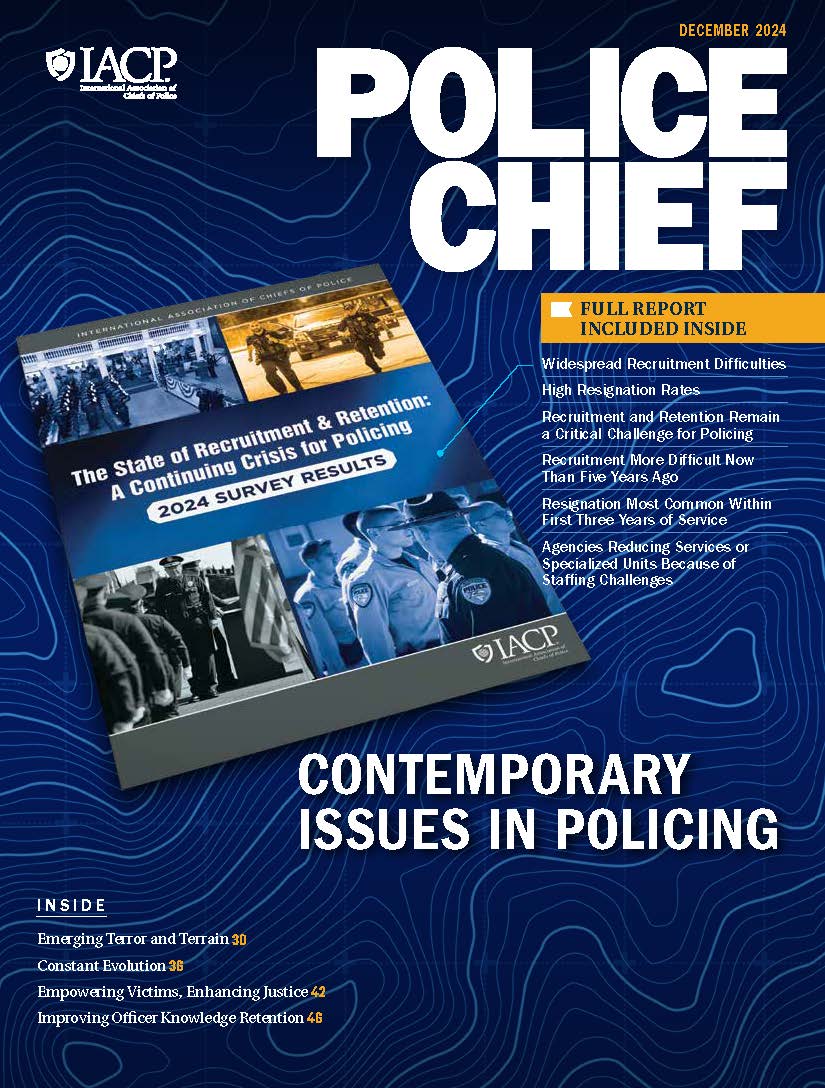The leaders of the United States have made it clear that the right to be free from slavery and involuntary servitude is guaranteed to all who choose to live in the United States. In 1865, President Abraham Lincoln formalized those freedoms into law with the Emancipation Proclamation. However, nearly 150 years later, slavery still exists in the United States in the form of human trafficking. Most recently, the Victims of Trafficking and Violence Protection Act of 2000 (TVPA) was enacted and reauthorized with the Trafficking Victims Protection Reauthorization Act of 2013 to protect the victims of modern-day slavery and ensure the just and effective punishment of traffickers.2 The secretive nature of human trafficking makes it nearly impossible to collect accurate data on the number of victims in the United States, yet alone find and free them.
Types of Human Trafficking
The TVPA defines the following two severe forms of trafficking:
- Sex trafficking in which a commercial sex act, defined in the TVPA as “any sex act on account of which anything of value is given to or received by any person” is induced by force, fraud, or coercion, or in which the person induced to perform such act has not attained 18 years of age.
- Labor trafficking, which is the recruitment, harboring, transportation, provision, or obtaining of a person for labor or services through the use of force, fraud, or coercion for the purpose of subjection to involuntary servitude, peonage, debt bondage, or slavery.3
Sex trafficking can occur within the context of street prostitution, brothels, escort services, massage parlors, and child sex tourism. Sex trafficking during major sporting events, such as the 2014 NCAA Final Four basketball tournament, has become a very profitable criminal venture that has resulted in the development of specialized task forces to address the problem.
Labor trafficking can occur in any environment where persons are needed to perform work, including but not limited to cleaning services, food production, construction, farm labor (both field and livestock management), any form of manufacturing, retail sales, and transportation services. Labor trafficking in environments such as strip or similar dance clubs, the production of pornographic videos, and massage parlors may be a combination of both labor and sex trafficking if commercial sex acts are involved. Labor trafficking may also occur in private residences, where victims are forced to perform as domestic servants or care for children or elderly residents.
Who Are the Victims of Human Trafficking?
A victim of human trafficking can potentially be anyone—male, female, or transgender; of any ethnic group or nationality; foreign immigrant or U.S.-born citizen; and of any age, income, or educational level. The common denominator of human trafficking victims is their vulnerability, which can be a result of unemployment, an unstable home environment, past history of abuse, a disability, or in many instances, a victim’s dream for a better life. Many youth who are runaways or “throw-aways” and end up on the street become victims to obtain food and shelter and, in many instances, a sense of acceptance and being wanted or needed by someone. There is no U.S. city, county, or state that does not have these conditions or persons with these vulnerabilities.
While conducting investigations, law enforcement needs to be mindful of the ploys and tactics used by traffickers. A few of the many of those tactics employed by the traffickers are using or threatening to use violence; false promises; depriving the person of basic necessities such as food, water, or sleep; threatening deportation or law enforcement action; and restricting contact with family and friends. The trauma caused to the victims can be so harmful that many may not identify themselves as victims or ask for help, even in highly public settings.
Adults who are coerced or forced into commercial sexual activities are not criminals and should not be incarcerated or treated as criminals, even if they appear to be willing participants at first appraisal.
Who Are the Traffickers?
As with victims of human trafficking, there is no one way to describe the “trafficker.” Traffickers exploit the vulnerabilities of others, take away their freedoms, and enslave them for the purpose of personal or commercial gain, and they can literally be anyone. Traffickers can be foreign nationals or U.S. citizens; individuals, entire gangs, or criminal networks; business owners; farm owners; manufacturers; large and small companies; and even labor brokers posing as employment agencies.
Cases have even revealed that traffickers are not necessarily always strangers to or casual acquaintances of the victims. Traffickers can be family members, intimate partners, and long-time friends of the victims. It is often incorrectly assumed that only males are traffickers, but a 2012 report issued by Northeastern University and the Urban Institute makes it clear that in the cases studied, 30 percent of the traffickers in both sex and labor trafficking cases were women.4 Traffickers often use the cultural or ethnic backgrounds they share with their victims to entice and control their victims.
Law Enforcement’s Role in Combatting Human Trafficking
As the guardians of ensuring that the rights and freedoms of those living in the United States are protected, law enforcement plays a key role in the fight against human trafficking. Yet the Northeastern University and Urban Institute report indicates that local criminal justice officials may not be well-informed on the issue or possess the tools, resources, and information necessary to effectively identify and prosecute cases of human trafficking. They may be even generally uninformed about protecting the rights of the victims and ensuring that they are directed to appropriate service providers. Officers on routine patrol may happen upon a situation involving human trafficking, but because of a lack of awareness or training, they might not recognize the situation as a crime and, therefore, fail to make inquiries or take appropriate action to intervene.
Although many human trafficking cases start with a tip to law enforcement from someone other than the victim, it is important for street-level law enforcement officers to become aware of the “red flags” that might indicate that human trafficking is present in their communities. The locations and settings where trafficking occurs do not always appear suspicious, trafficking often occurs in very public places, such as restaurants and hotels. Officers should be aware that the key indicators of human trafficking may not be the setting itself, but rather may be evident through the conditions and circumstances observed in the victim. Another key misperception is that movement across jurisdictional lines is a required element of proving human trafficking. The smuggling of humans into the United States does not necessarily constitute the crime of human trafficking, and human trafficking offenses often occur without the victim crossing any state lines or borders into the United States.
Some red-flag indicators of the presence of human trafficking include the following situations:
- A person whose movement and activities appear to be closely controlled or monitored by another.
- A person who works excessive hours, but receives little or no pay. This person may be told that payment is on its way or asked to wait.
- A person who works excessive hours and is fearful of discussing working conditions.
- A person who is unaware that unsafe work conditions are unlawful.
- A person who has little or no idea where they are geographically located.
- A person who is always transported to and from the work site by another person.
- An able-bodied person who never leaves home unless escorted.
- A person who is fearful of discussing their relationship to a person who appears to have control over him or her.
- A minor who is engaged in commercial sexual activities.
- Groups of workers transported in and out of labor locations covertly or under controlled conditions.
- A foreign national adult or minor who is not in possession of identifying documents, especially if he or she says that someone else has them.5
Not all of the above indicators are present in every human trafficking situation, and the presence of any one of these indicators is not necessarily proof of human trafficking, nor is the absence of any one proof against human trafficking. If any of the above indicators are present, additional inquiry should be made to further assess the situation.
Chiefs’ Responsibilities
Human trafficking is becoming more pervasive in society. Chief executives of law enforcement agencies have a responsibility to take steps to prepare their agencies and officers to protect the rights of their community members, regardless of whether the community has ever had an experience with human trafficking. It’s important for chiefs to take advantage of the trainings and resources offered (including those from IACP and DOJ) and to work with prosecutors, community leaders, and social service agencies to ensure that their officers and communities are prepared to respond effectively to the crime of human trafficking.♦
Notes:
1This report was compiled from various sources, by Linda S. Hammond-Deckard, Policy Advisor with the U.S. Department of Justice, Office of Justice Programs, Bureau of Justice Assistance.
2Victims of Trafficking and Violence Protection Act of 2000, Pub. L. No. 106-386, Division A:Trafficking Victims Protection Act of 2000, http://www.state.gov/documents/organization/10492.pdf (accessed June 5, 2014).
3 Ibid.
4Identifying Challenges to Improve the Investigation and Prosecution of State and Local Trafficking Cases (Northeastern University Institute on Race and Justice, Urban Institute, April 2012), http://www.ncjrs.gov/pdffiles1/nij/grants/238795.pdf (accessed June 5, 2014).
5Anti-Human Trafficking Task Force Strategy and Operations e-Guide (Office of Victims of Crime, Bureau of Justice Assistance, U.S. Department of Justice, 2009?2010), http://www.ovcttac.gov/TaskForceGuide/EGuide/Default.aspx (accessed June 5, 2014).
Please cite as:
“Human Trafficking 101 for Law Enforcement,” The Police Chief 81 (July 2014): web only.



